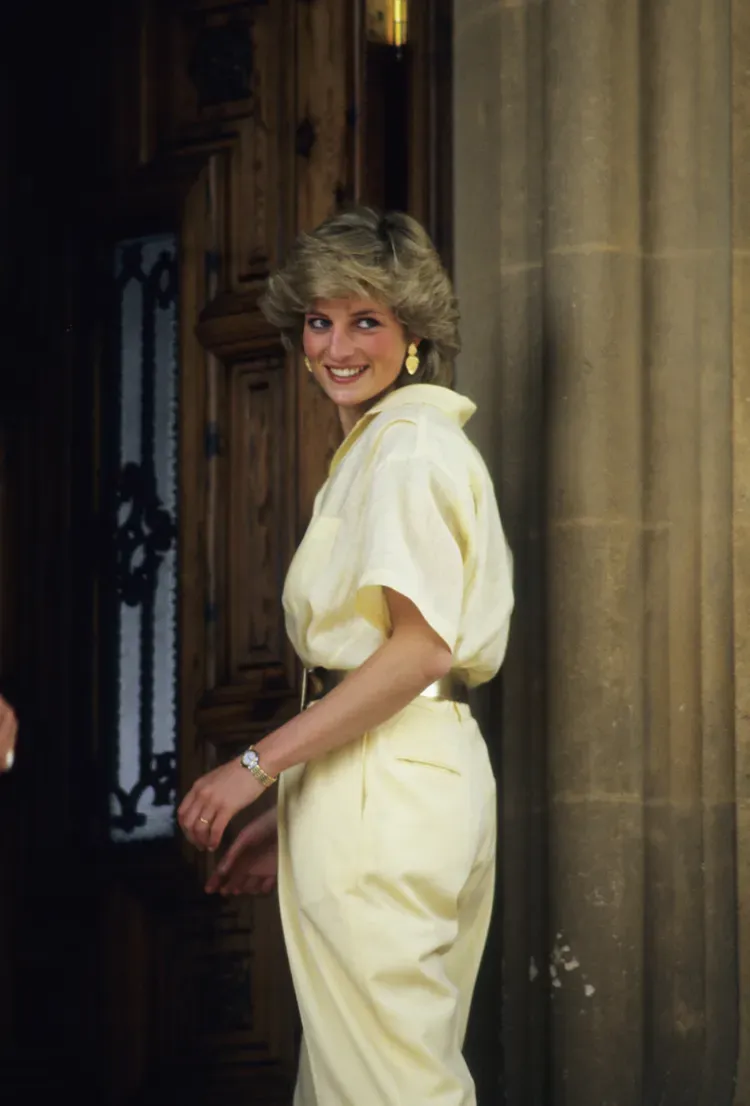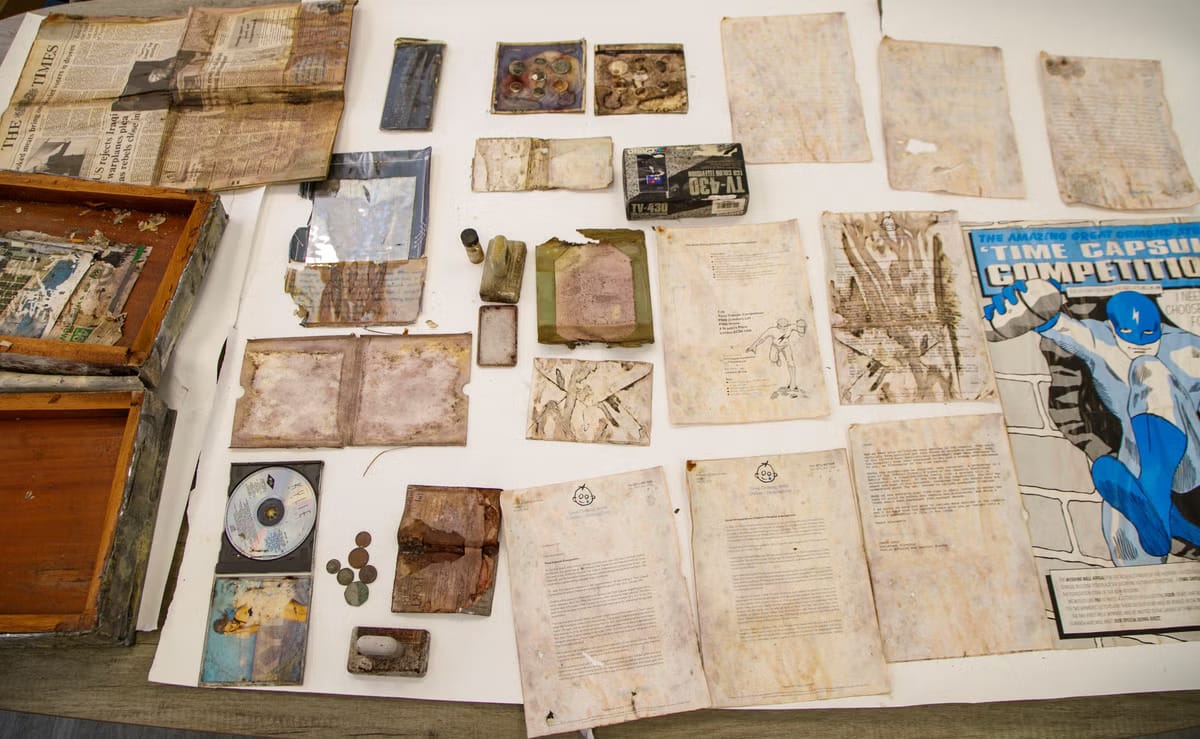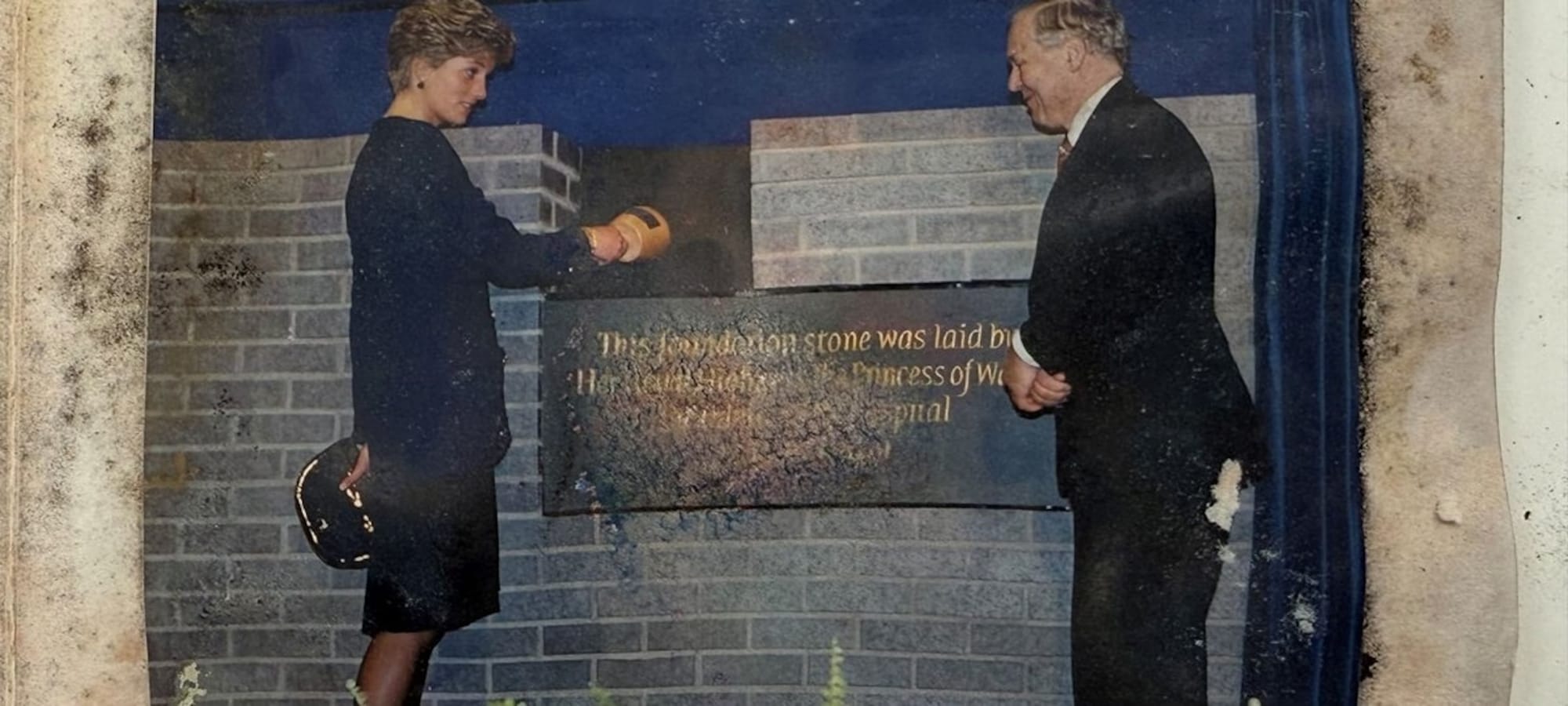The Time Capsule that Rewrote Diana's Legacy: A 34-Year Royal Mystery Finally Revealed
Unveiling the secrets of a time capsule sealed by Princess Diana in 1991. Discover the fascinating, personal items that reveal her true character and enduring legacy, and explore the emotional impact on her sons, William and Harry, as they reconnect with their mother's past.

Written by Lavanya, Intern, Allegedly The News
LONDON, August 28, 2025
It was a moment frozen in time, a silent footnote in the sprawling history of the British monarchy. On a cold March day in 1991, Diana, Princess of Wales, knelt at the foundation of a new building at Great Ormond Street Hospital (GOSH) in London. With her, two young children who had won a BBC "Blue Peter" competition watched as she carefully sealed a lead-lined wooden box, a time capsule intended to remain untouched for a century or more. The world moved on, the years passed, and Diana’s own story ended in tragedy just six years later. The box, however, stayed exactly where it was, a forgotten promise buried deep beneath the bustling, life-saving work of the hospital.
Until now. The long-awaited, and in many ways, premature opening of the capsule has been a moment of profound historical and emotional significance. As construction began on GOSH’s new Children’s Cancer Centre, the decision was made to unearth the relic. What was revealed was not a trove of royal jewels or state secrets, but something far more powerful: a humble collection of everyday items that offered a deeply personal and poignant window into the world of the "People's Princess" at a pivotal moment in her life. This is not just a story about a box; it is an act of historical archaeology that has forced the world to re-evaluate the carefully curated public image of a global icon.
The Historical Blueprint: A Time-Stamped Portrait
The contents of the time capsule were meant to represent life in the 1990s as seen through the eyes of children. Chosen by 11-year-old David Watson and 9-year-old Sylvia Foulkes, the items are a fascinating mix of pop culture, technological innovation, and youthful idealism. Their selections, though seemingly random, now stand as a cultural and historical snapshot that is both charmingly nostalgic and surprisingly prescient.
The most discussed item has undoubtedly been the Kylie Minogue "Rhythm of Love" CD. For many, this is a symbol of Diana's relatability. It’s a mainstream, pop music artifact that she, the Princess of Wales, personally helped place in a time capsule. This small detail shatters the image of a remote royal and reinforces her reputation as a modern, approachable figure who was in touch with popular culture. The inclusion of this item speaks volumes about her ability to connect with people, particularly the younger generation, on a level that was disarmingly simple and genuine.
Another intriguing item is the Casio pocket color television. In 1991, this was a high-tech marvel. Today, it’s a technological relic. The presence of this device highlights the rapid pace of change in our world and serves as a powerful reminder of how far we've come. It also brings a smile to the faces of those who remember the high cost and novelty of such devices. As Janet Holmes, a senior health play specialist who was working at GOSH in 1991, remarked, "It brought back so many memories seeing the pocket TV in there – I had bought one for my husband back in the day… they were very expensive then!"
The more symbolic items, however, offer the deepest insights. The tree seeds in a bottle, chosen by Sylvia Foulkes, were a symbol of hope and growth. They were meant to germinate and flourish in the future, just as the hospital and its patients were meant to. The sheet of recycled paper and the European passport are perhaps the most politically charged items. The recycled paper speaks to the nascent environmental movement of the early '90s, a cause that would later become a cornerstone of both of her sons' work. The passport is a stark and poignant reminder of a united Europe, a concept that has since been fractured by Brexit. It’s a silent commentary on a political reality that neither the children nor Diana could have ever foreseen.
Finally, a copy of The Times newspaper from the day the capsule was sealed, along with a collection of British coins, anchors the discovery in a specific historical context. The headlines detailing the Gulf War and the internal struggles of the Soviet Union are a chilling reminder of the global tensions that defined that era.

The Emotional Echoes: Unveiling a Mother's Heart
While the public contents are fascinating, it is the personal, unlisted items that hold the most profound emotional weight. A small, sealed envelope containing a handwritten note from Diana herself was found, a message from her to her sons. While the content has not been made public, royal sources have suggested it contains personal reflections on their childhood and her hopes for their future. This is a direct, intimate communication that has been untouched for over three decades, a message from a mother who knew her time was a constant struggle.
The most revealing item, however, is a slightly damaged photograph of Diana, a casual, smiling snapshot of her with a group of GOSH staff and patients. It wasn’t a formal royal portrait but a candid moment of connection. This photo, placed in the capsule alongside the children’s items, is a subtle yet powerful declaration of what was most important to her at that time: her work with charities and the genuine relationships she formed with ordinary people. It reinforces the fact that her public life, particularly her humanitarian work, was a profound and authentic reflection of her private values.
The Sons' Perspective: A Legacy Reaffirmed
The opening of this time capsule is not merely a historical event; it is a profoundly personal one for Princes William and Harry. It offers a tangible connection to the mother they lost too soon, a collection of objects that speaks to her character and her life in a way that no documentary or biography ever could. The discovery of the Kylie Minogue CD and the pocket TV is a portal to their own childhoods, a reminder of the world they inhabited before their mother's tragic death. It’s a moment of shared experience with her, an echo of a time that was, in many ways, more innocent and less scrutinized.
For Prince William, the context of the hospital itself is deeply personal. Just a few months after the capsule was sealed, he spent two nights at GOSH after a golf club accident. The hospital is a place of both memory and meaning for him. The discovery of the capsule there, a testament to his mother's dedication—must feel like a powerful, full-circle moment. It reaffirms her influence on his own life and charitable work, particularly his new focus on tackling homelessness, a cause she championed.
Prince Harry, who has been vocal about his desire to keep his mother’s legacy alive, will undoubtedly find the contents deeply moving. The time capsule is a physical link to the mother he barely knew as an adult. The handwritten note, in particular, will provide a private, priceless moment of communion with her. The contents validate his own humanitarian efforts, particularly his work in Africa, which so clearly mirrors her own. The time capsule, for both brothers, is a testament to the fact that their lives and their work are not just a product of the Royal Family but are profoundly shaped by their mother's legacy of compassion and empathy.
An Unforeseen Legacy: A Treasure of the Heart
The time capsule was never meant to be a monetary treasure trove. A 1990s pop CD and a pocket TV have little financial value on the open market. But their historical, emotional, and social worth is immeasurable. They tell a story that cannot be found in formal archives or royal biographies. They are the artifacts of a genuine, living person who was at a crossroads in her life.
The discovery has prompted a wave of reaction from media, fans, and historians alike. Social media has been flooded with nostalgic posts and heartfelt tributes. Historians have hailed the find as a unique primary source document, one that provides an uncurated look at Diana’s life. As one royal historian noted, "We've seen the public Diana, the official Diana, the tragic Diana. But this is the human Diana, the one who was in touch with the world around her, who was not afraid to get her hands dirty and connect with everyday life."
The fact that the capsule was unearthed for the construction of a new Children's Cancer Center, a project so perfectly aligned with her life’s work- is a beautiful, poignant irony. It is a powerful reminder that her legacy of compassion is not just a historical footnote, but a living, breathing force that continues to inspire and save lives today.

A Concluding Thought: The Message from the Princess
The opening of Princess Diana’s time capsule has revealed much about her, her world, and her enduring legacy. The true treasure was not a collection of objects, but the story they told- a story of a woman who was ahead of her time, who valued connection and humanity above all else, and whose influence continues to shape the world long after she has left it. The capsule was not just a historical container; it was a message, sealed in hope and opened in a moment of great need, that her work and her spirit live on.
The time capsule has confirmed what many suspected all along: Princess Diana’s greatest power lay not in her titles or her position, but in her humanity. The simple relics she helped bury were not for the history books, but for the future generations who would need to be reminded that a princess could be a person, and that true royalty is found in compassion, not crowns.
Beyond Nostalgia: A Deeper Reflection
In an age of digital information and hyper-curated public personas, what can the raw, personal nature of Diana's time capsule teach us about authenticity and legacy? How might the private revelations from the handwritten letter influence the relationship between Prince William and Prince Harry, and their approach to public life in the years to come?
Sources
Great Ormond Street Hospital, BBC Archives, and verified news reports from publications such as The Guardian, The Independent, and The Standard.




